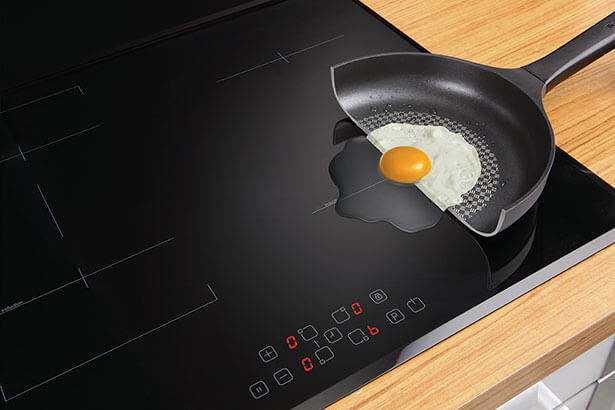
Induction Cooking: A Greener Alternative
With the Holiday Season approaching, the heat is on in domestic and commercial kitchens and chefs and cooks will be busy at their ranges. Arguably though, the cooktop is the appliance used most intensively at holiday time, helping prepare vegetables, sauces, and everything else other than pies, meat and turkey.
Today’s cooktops are powered by either gas or electricity, and the overwhelming majority of those using electricity rely on resistance coils rather than induction heating. That might be about to change though as gas falls out of favor and a quest for savings drives renewed interest in energy efficient home appliances.
What is Induction Cooking?
Resistance coils generate heat by providing a barrier to the flow of electric current. It’s the same principle that’s used in incandescent light bulbs, which glow white as electrical resistance heats the filament. In a cooktop heat from a coil below the surface is conducted up and into the cookware placed on top, and from there to the water or sauce inside.
Induction heating uses magnetic flux to heat ferrous metal cookware. The working principle is the same as that used in a transformer. AC power produces an oscillating magnetic field that induces eddy currents in the pots and pans. These generate heat from resistance to the flow of electricity, which flows into the contents of the cookware.
Efficiency Impacts of Induction Cookers
According to the Department of Energy, a gas cooktop is only 32% efficient. In other words, two thirds of the energy in the gas is wasted. In contrast, electric resistance heating is around 75 – 80% efficient.
Induction heating is more energy-efficient still, at around 85%, but that’s not the end of the story. With induction the cooktop surface stays cool, only being warmed by the cookware sitting on top. This reduces the heat going into the kitchen, so lowering the load on the air conditioning.
Growing Interest in Induction Cooking
Cooking with induction rather than resistance heating is not a new idea, but it has been niche rather than mainstream kitchen technology. Anecdotally, interest is strong in Europe and appears to be rising in North America too, but there’s also data to back this up.
Business intelligence specialists Future Market Insights recently published a study of the commercial induction cooktops market that projects compound annual growth of 8.2% from 2022 to 2032, adding more weight to the theory that the future of cooking is induction.
Induction Cooking May Become Mandatory
Cooking with natural gas (technically, methane), has adverse consequences. Combustion releases carbon dioxide, a greenhouse gas (GHG), and carbon monoxide, which is potentially hazardous in poorly ventilated spaces.
Some states and municipalities, notably California and New York, are pushing to address GHG emissions from cooking and heating with gas. This will be done by prohibiting gas hookups on new construction, requiring homes and commercial properties to operate entirely on electric power with the implication they will be powered by renewable energy to make it truly “green”.
Should this come to pass, builders and residents of electric-only properties will have to choose between a resistance or an induction cooktop.
Additional Considerations for Induction Cookers
Despite their higher energy efficiency, there are some barriers to adoption of induction cooktops. They are more expensive than resistance units of similar size, and they require ferrous, generally stainless steel, cookware.
Countering these points, proponents note that water boils faster on an induction cooktop, which saves time, and it’s safer because the top remains cooler, (which also means less cleanup.) Induction cooktops respond much faster to changes in temperature settings and can be easily programed to turn off automatically. Together, these points raise the prospect of automated or “smart” control over the appliance, perhaps eliminating “boil overs” and optimizing cooking.
Induction Cooking as part of the energy transition
Businesses and consumers are looking for ways to lower their energy costs and reduce their carbon footprint, and the induction cooktop has a role to play. As states and municipalities move to block gas hookups in new buildings there will be no choice but to go electric, and induction is clearly the more energy-efficient option. What’s more, when the power comes from renewables it’s greener too.
Ready for Smart Appliances
NMB Technologies Corp. is a MinebeaMitsumi Group company, a global manufacturer of precision electronic components serving industries ranging from automotive and robotics to consumer technology. Contact us to learn more about the things we make, our consumer technology expertise, and how we can help manufacturers develop more energy-efficient appliances.

